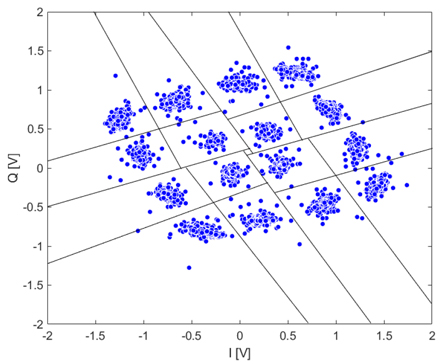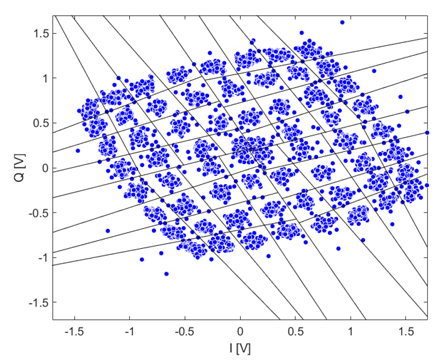|
Full title—New Decision for QAM Based on SVM for Complex Impairments
In this paper, we propose a new decision method based on a support vector machine for quadrature amplitude modulation (QAM) to improve the bit error rate (BER) performance of QAM for arbitrary complex impairments when both modeled and unknown impairments exist simultaneously.
 
Decision regions of 16-QAM (left) and 64-QAM (right) for complex impairments in Rayleigh fading channel
To do this, we first propose an algorithm for assigning bit decision boundaries corresponding to each quadrant for M -ary QAM, considering the asymmetry of the QAM constellation caused by the impairments.
Then, we determine the optimal decision boundaries by learning a linear classification model for each bit decision region from I and Q values of received QAM signals as two-dimensional support vectors.
Finally, the decision rules for each bit are presented based on the obtained optimal decision boundaries, and the bit decisions are performed using the decision rules.
Based on the above process, we can effectively demodulate QAM signals for arbitrary complex impairments without compensation processes. Through computer simulations, we show the proposed method outperforms conventional model-based compensation schemes in BER performance under the condition of complex impairments.
Full Article: IEEE Transactions on Vehicular Technology, Early Access, 2022 |